I forget for how many years Lucille à Joseph LeBlanc lived away from her hometown on the west coast of Cape Breton, Chéticamp. It was more than two decades, and it was thousands of kilometres. “Yeah, I lived away, you know,” she told us.
“I always came back for Mi-Carême.”
When I was 19, I stumbled across a correfoc, a fire run, in Barcelona, part of a traditional Catalan festival in which children dressed up as red and orange devils and whirled handheld fireworks to the rhythmic pounding of ferocious street drummers. It was every bit as astonishing and as powerful as it sounds, and I was left with a sense of loss in North American culture.
My closest comparison was Hallowe’en, a tradition with similar origins and the same societal prominence, which at this point in Western society can easily be described as a corporate-sanctioned celebration of consumerism and unhealthy food. In North America, I figured, the best we’ve got is a night in which we give a bunch of middle schoolers cheap candy and late curfews, and maybe a battery-powered scary story to tell.
Then I learned about Mi-Carême.
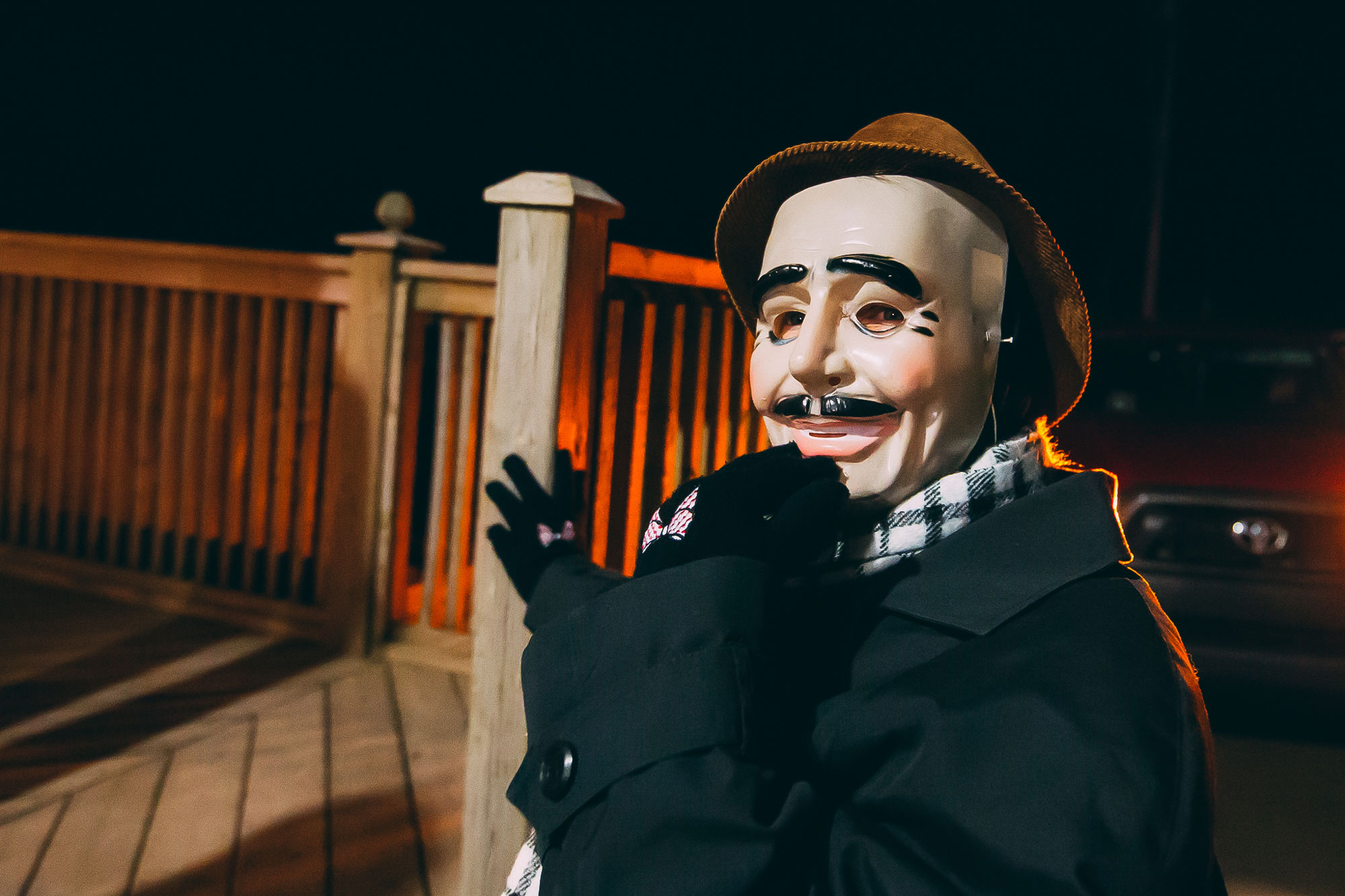
It came up in conversation while Lucille’s husband Michel was talking about community-based photography. It happens every year in a handful of Acadian communities on the east coast of Canada, and it’s a touchstone of local culture in Chéticamp, Nova Scotia.
It didn’t happen while we were in Chéticamp, for the record. I just heard about it. The photos are from Michel.

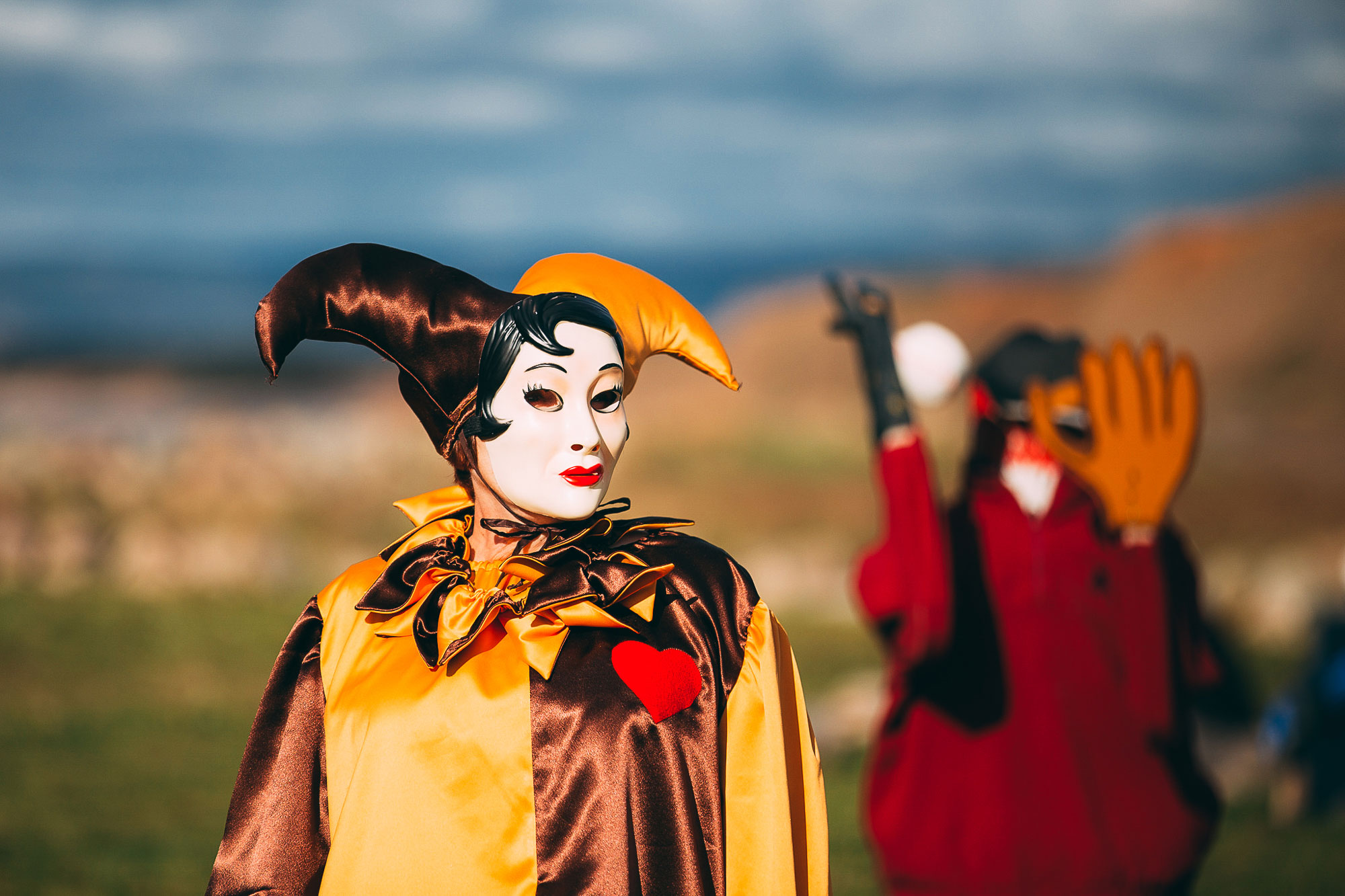
The festival originated in medieval Europe. The period of Lent, in the Christian calendar, is a time of austerity, sacrifice and solemnity that leads up to Easter; and the joy, laughter and mischief of Mi-Carême falls right in its centre. Mi-Carême actually translates to ‘Mid-Lent.’ The way Michel and Lucille explained it to me, I could just imagine medieval European peasants begging priests for a day off—or perhaps more precisely, a night off—from their Lenten penance.
One of the traditions of Mi-Carême was a Santa Claus-esque figure that rewarded good children and punished naughty ones. Michel and Lucille didn’t mention this to me because it wasn’t part of their modern Mi-Carême celebrations, but I came across it while doing a bit of research and it’s worth sharing.
Back home, Jos Nézime always played Mi-Carême. He was one of my mother's old uncles. After supper, he got all dressed up and then came back out as Mi-Carême. He always had a large cover and a big cane. I was scared to death. He arrived with a sack and put it down in the usual place without saying a word. We all took turns coming over to get our present. It was usually an apple, or a piece of toffee, or something like that. I was scared because he had the big cane. Anne-Marie (LeClair) Perry in the early 20th century
The Mi-Carême that Michel and Lucille knew and loved was characterized by the tradition of disguising themselves and making rounds to their neighbours’ houses. “It’s more for the adults than for the kids,” Michel said. “Hallowe’en is for little kids. For the adults and for the community, we have Mi-Carême.”
Preparations start months in advance. Disguises are often sourced from nearby villages or handmade, and are always kept secret except to the closest of friends. “You know that closet space upstairs? Closet full of bins.” Michel grinned. “Bins full of costumes.”
On the nights of Mi-Carême, groups of friends and family get together, don their costumes, and tour from house to house in full disguise. It’s a game. You try to avoid being recognized by your hosts, so you try to change posture, your behaviour, your voice; meanwhile they size you up and entice you into conversation, all the while looking for a tell. Once they guess correctly, off comes the mask and out come the drinks and food to celebrate.
“So we laugh and talk and then on we go to the next house. Sometimes we change costumes and double back. At the end of the night we go back to the houses of our best friends to spend a bit more time together.”
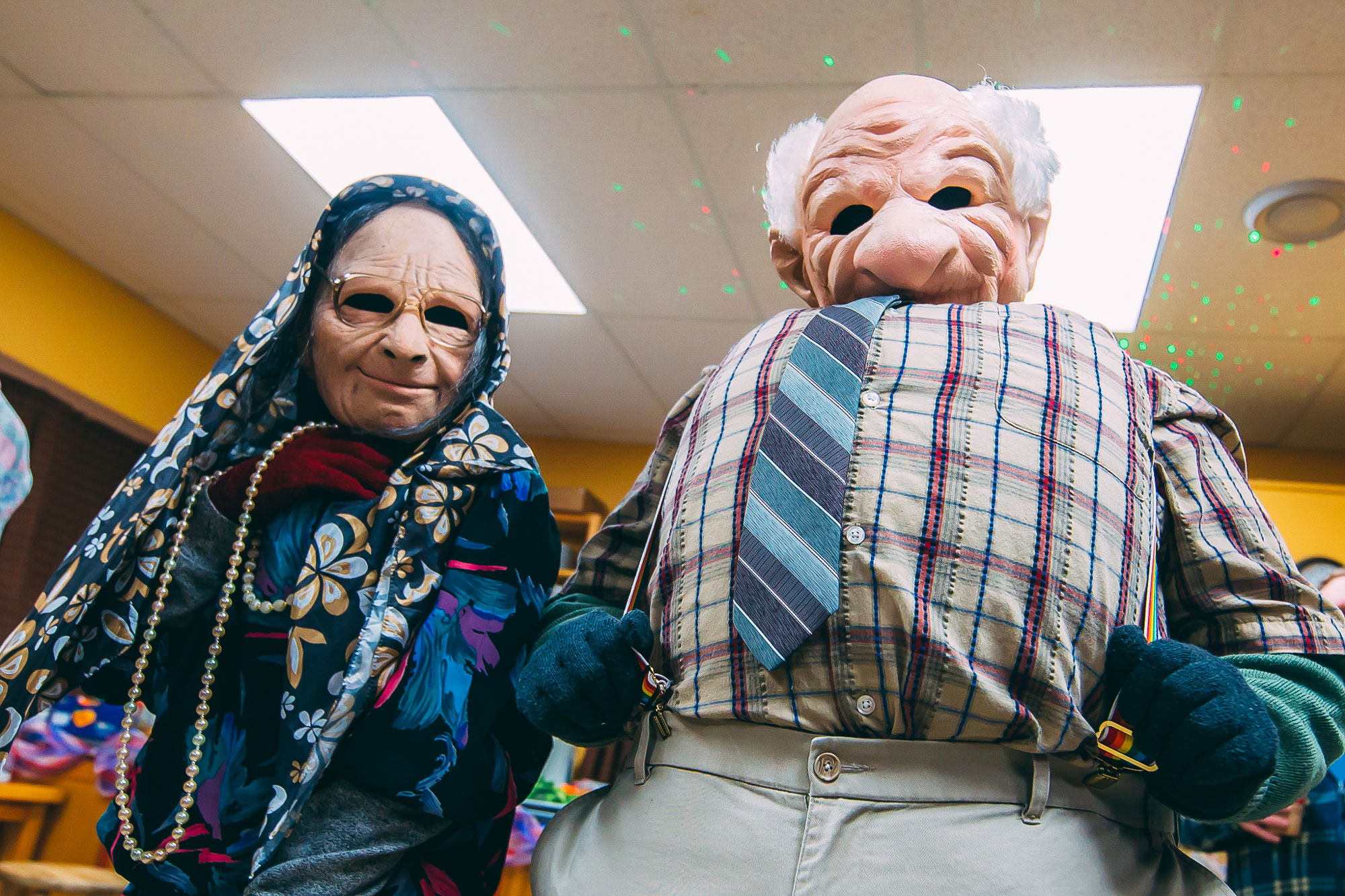
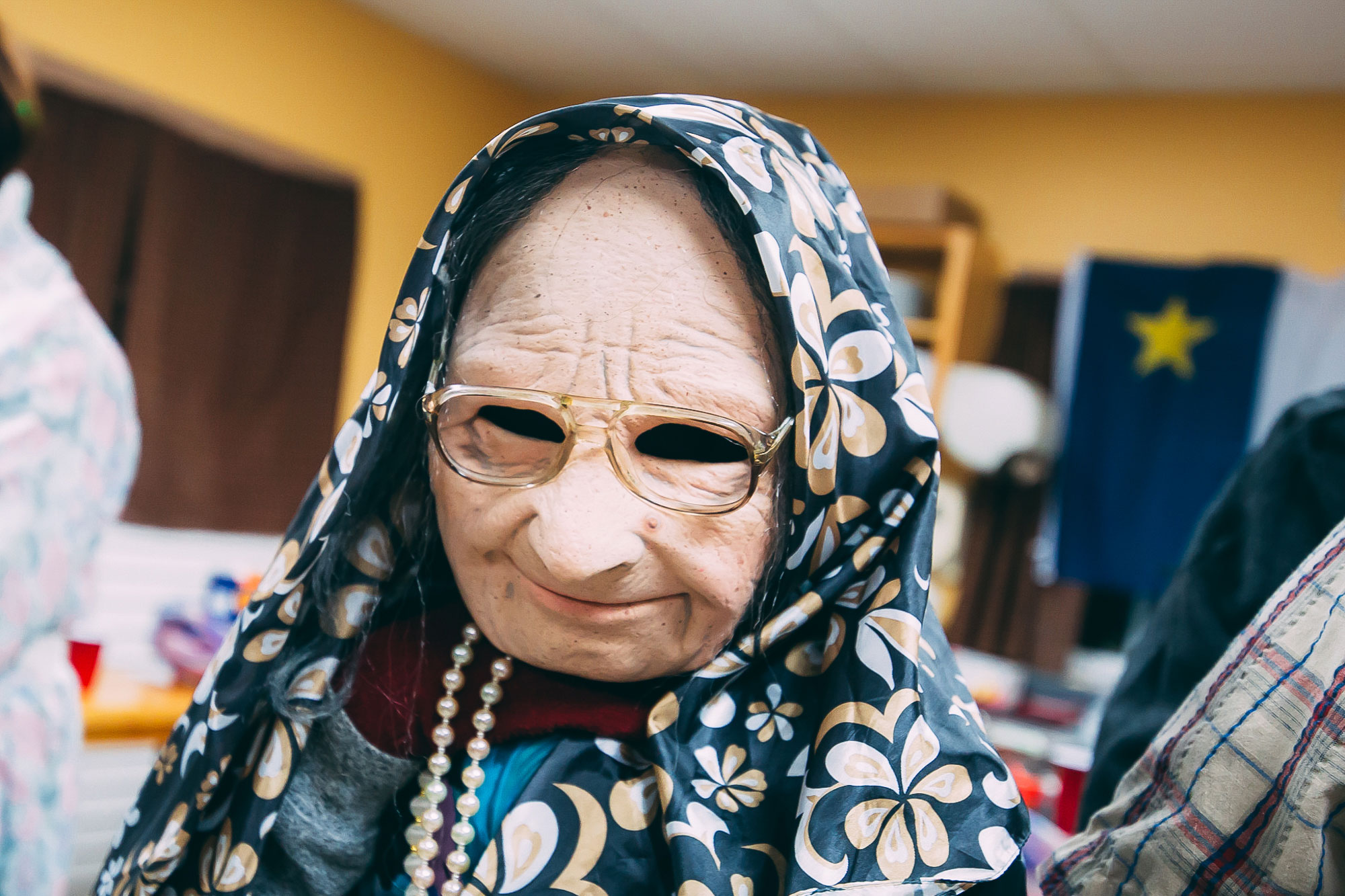
Often the masks have black netting behind the eyeholes to hide the person’s eyes. Lucille’s eyes always used to give her away, so now she usually keeps them hidden. That’s why the eyes are so dark in the previous two photos.
It makes for actually spooky looking disguises, if you ask me. More so if you look at vintage photos of the Mi-Carême disguises from the mid-20th century. They make me think of certain horror movies. And while participating in the celebrations basically just means having your friends drop by to visit, at least in my imagination there’s still something wonderfully unnerving about the impenetrable disguises of the Mi-Carême. It’s not dangerous, and neither was the correfoc in Barcelona. But it’s not predictable like Hallowe’en is. It has an edge of mystery.
But Mi-Carême was never about fear, and I don’t mean to give it that impression; I’m just trying to set it apart from other festivals. The masks aren’t scary, they’re accompanied by the comically disguised voices of your neighbours. The mood isn’t spooky, it’s light with laughter. The night isn’t dark, it’s a welcome splash of merriment in the long late winter of the east coast. It’s unlike anything else I can compare it with, a village-held tradition that lingers from the days when doors were open and communities were closer.
I didn’t know it existed.
Mi-Carême used to be practiced in all Acadian communities, but World War II had a negative impact on the tradition, since in many cases young men were its keepers. The secularization of society meant that in the 1960s, Lent became more relaxed and less culturally significant, which also led to the dwindling of Mi-Carême celebrations.
According to Le Centre de la Mi-Carême, there’s only six communities—three in Nova Scotia and three in Québec—that celebrate the festival. That might seem disheartening, but if Saint-Joseph-du-Moine and Magré are anything like Chéticamp, it is a vibrant, thriving piece of east-coast culture, albeit a unique one.
I wish I could adequately describe Lucille laughing and stomping her foot to emphasize her stories of Mi-Carême festivities of years gone by. I wish I could remember all of Michel’s stories, like the time he photographed Lucille and didn’t realize it was her.
In lieu of those more emotional, personal moments that I experienced listening to them talk about the festival, I’ll close by saying that perhaps what I’ll remember most about Mi-Carême is the feeling of discovering a piece of Canadian culture that I never knew of before. It was the same feeling as when I realized I didn’t really know how a doorknob worked—discovering I knew so little about something that had previously felt so familiar.
I think there’s a lot of things we collectively don’t know about this place we call home, and about each other—and from what I’ve experienced so far, those things hold a lot of value. Keep your eyes open and keep asking questions. There’s a lot of stories to be had.
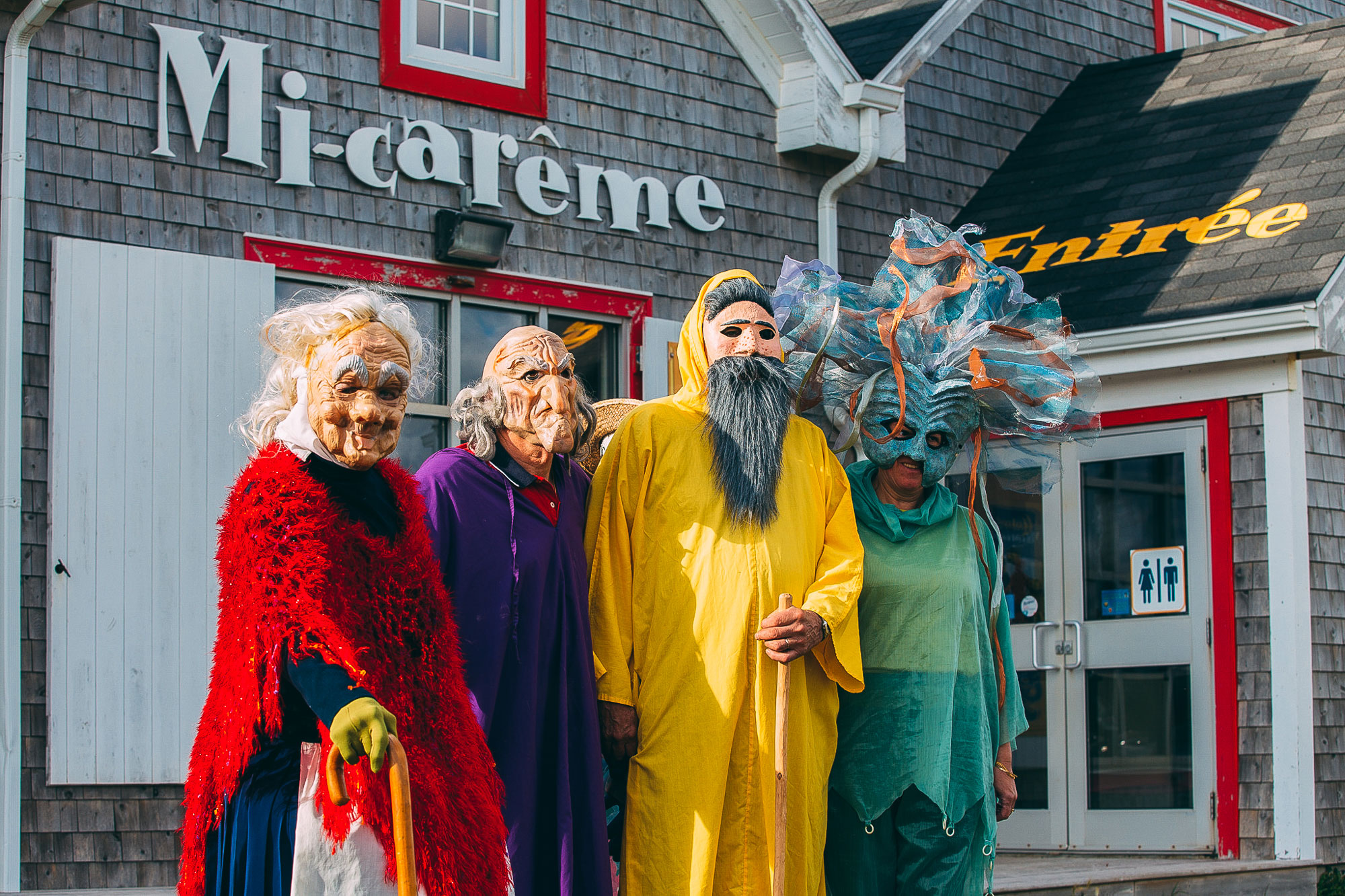
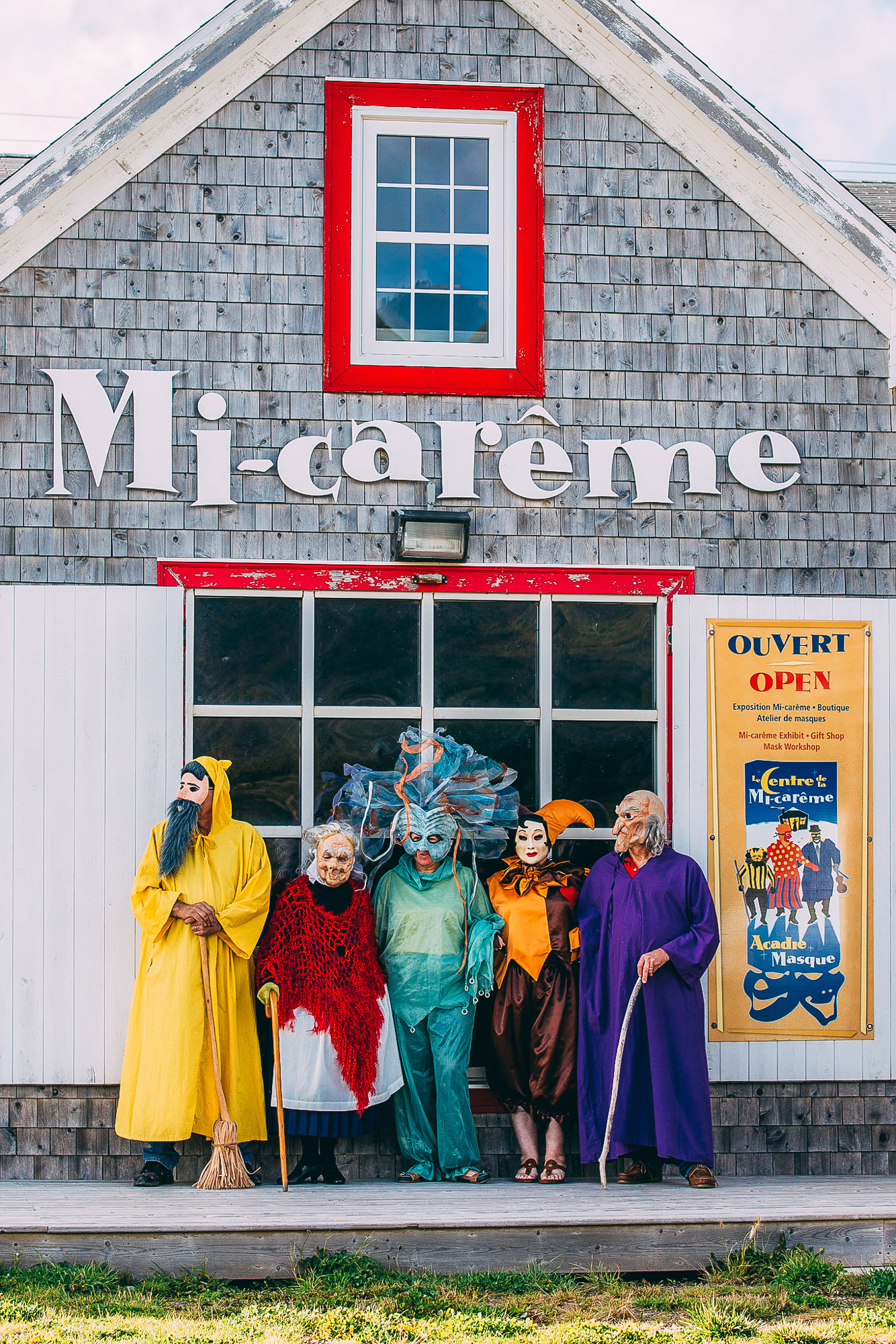
Thanks to Lucille and Michel Soucy for providing the photos and such good stories.